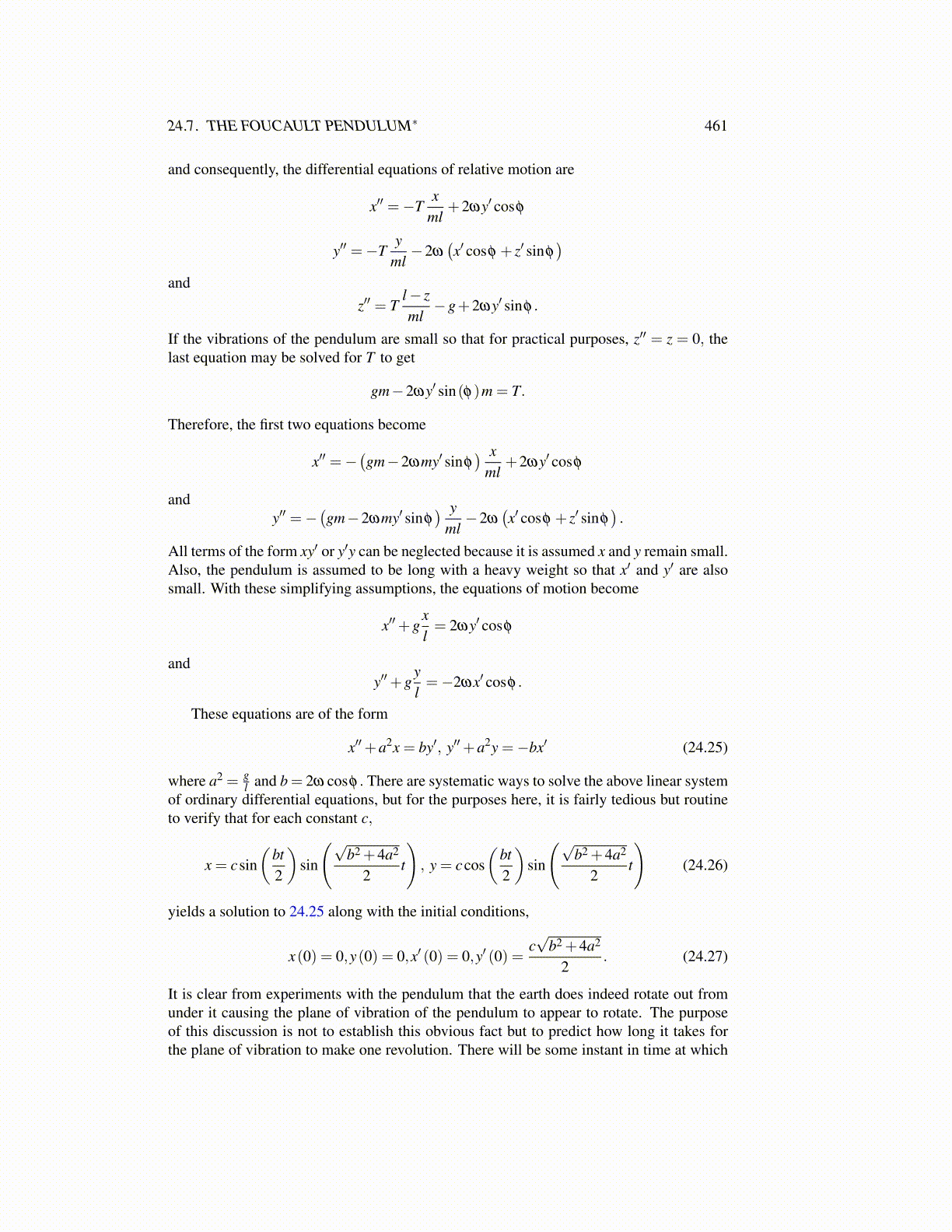
24.7. THE FOUCAULT PENDULUM∗ 461
and consequently, the differential equations of relative motion are
x′′ =−Tx
ml+2ωy′ cosφ
y′′ =−Ty
ml−2ω
(x′ cosφ + z′ sinφ
)and
z′′ = Tl− zml−g+2ωy′ sinφ .
If the vibrations of the pendulum are small so that for practical purposes, z′′ = z = 0, thelast equation may be solved for T to get
gm−2ωy′ sin(φ)m = T.
Therefore, the first two equations become
x′′ =−(gm−2ωmy′ sinφ
) xml
+2ωy′ cosφ
andy′′ =−
(gm−2ωmy′ sinφ
) yml−2ω
(x′ cosφ + z′ sinφ
).
All terms of the form xy′ or y′y can be neglected because it is assumed x and y remain small.Also, the pendulum is assumed to be long with a heavy weight so that x′ and y′ are alsosmall. With these simplifying assumptions, the equations of motion become
x′′+gxl= 2ωy′ cosφ
andy′′+g
yl=−2ωx′ cosφ .
These equations are of the form
x′′+a2x = by′, y′′+a2y =−bx′ (24.25)
where a2 = gl and b = 2ω cosφ . There are systematic ways to solve the above linear system
of ordinary differential equations, but for the purposes here, it is fairly tedious but routineto verify that for each constant c,
x = csin(
bt2
)sin
(√b2 +4a2
2t
), y = ccos
(bt2
)sin
(√b2 +4a2
2t
)(24.26)
yields a solution to 24.25 along with the initial conditions,
x(0) = 0,y(0) = 0,x′ (0) = 0,y′ (0) =c√
b2 +4a2
2. (24.27)
It is clear from experiments with the pendulum that the earth does indeed rotate out fromunder it causing the plane of vibration of the pendulum to appear to rotate. The purposeof this discussion is not to establish this obvious fact but to predict how long it takes forthe plane of vibration to make one revolution. There will be some instant in time at which